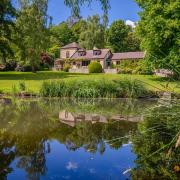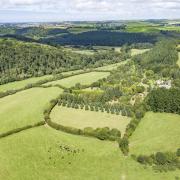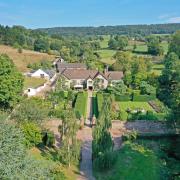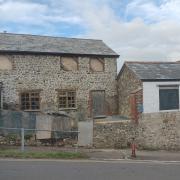Continuing our series looking at creating your own dream home, the first thing to do is find a suitable plot!
Self-BuildingContinuing our series looking at creating your own dream home, the first thing to do is find a suitable plot!WORDS BY JONATHAN BRADDICKThe current boost in the self-build sector means that finding your dream (or even just a suitable) plot of land in the area that you want to live can be one of the hardest parts of carrying out a self build project. However, there are lots of different ways to look, and an organised, wide-ranging search is the key to success in finding that dream plot. Here are some of the options:AuctionsLand auctions can be a source of cheap land for sale, however proceed with caution. Due to their nature they do mean you need to be in a position to move quickly. More importantly there is a risk of not carrying out all of the research and investigations in the short time available, property sold at auction is on an ‘as seen’ basis, it is very much buyer beware! Also be careful not to get carried away at an auction and pay over the odds. Estate agentsAgents often have building land on their books, and local contacts with property developers and so on, any of which could lead to news of a building plot for sale. The internetThere are lots of very good web-based search directories specifically aimed at self-builders. These sites allow you to quickly peruse large databases of land currently for sale. Some of the sites even include aerial photos and all the necessary details. These online databases are extremely popular with private sellers as they don’t have to pay to advertise on them. Recommended ones include: uklanddirectory.org.uk, building-plot.org.uk, plotfinder.net, uklandsearch.com, and buildstore.co.uk/findingland.Self-build associationsThese can also be extremely useful, and one that I recommend is BADSBA (Build a Dream Self Build Association). A key benefit of being a member is help in finding sites. bathselfbuild.co.ukWhen looking for somewhere to build your dream home you don’t necessarily need to find an empty site. ‘Replacement builds’ are increasingly popular, especially in sought after areas where land can be at a premium. A property doesn’t need to be derelict for it to be financially viable. Lots of self-builders find demolishing and replacing an existing property is often more advantageous than renovating. When assessing the viability both financially and in terms of planning permission, I recommend talking to an architect, most of whom will be very pleased to give some free initial advice.Your search will generate a lot of information so be organised. Keep a folder of all the properties you have found. A spreadsheet index can be extremely useful way of quickly referencing and comparing stats. Don’t just limit your research to a desk study; it is essential that you visit the plot on several occasions, and different times of the day.Once you have found a site that you think you want to proceed with, there are a few final checks to make: • Ensure the price is realistic• Ascertain the planning history and permission status• Investigate such matters as contaminated land, tree preservation orders, flood risks, etc.At this stage, instructing an architect to produce a feasibility study for you may be a good investment. The scope of this type of study can vary greatly depending on your requirements and the site specifics, but generally it will investigate all of the above as well give advice of some of the initial decisions in regards to height, access, siting and orientation.If you need help choosing an architect, contact the RIBA client’s services team who will match you with three or four local architects who specialise in the type of work you want to do. nRIBA, 020 7307 3700, architecture.com/useanarchitect. Jonathan Braddick is a Chartered Architect and Chairman of the Plymouth Branch of the Royal Institute of British Architects. jonathanbraddick.co.ukSelf-Building
Continuing our series looking at creating your own dream home, the first thing to do is find a suitable plot!
The current boost in the self-build sector means that finding your dream (or even just a suitable) plot of land in the area that you want to live can be one of the hardest parts of carrying out a self build project. However, there are lots of different ways to look, and an organised, wide-ranging search is the key to success in finding that dream plot. Here are some of the options:
AuctionsLand auctions can be a source of cheap land for sale, however proceed with caution. Due to their nature they do mean you need to be in a position to move quickly. More importantly there is a risk of not carrying out all of the research and investigations in the short time available, property sold at auction is on an ‘as seen’ basis, it is very much buyer beware! Also be careful not to get carried away at an auction and pay over the odds.
Estate agentsAgents often have building land on their books, and local contacts with property developers and so on, any of which could lead to news of a building plot for sale.
The internetThere are lots of very good web-based search directories specifically aimed at self-builders. These sites allow you to quickly peruse large databases of land currently for sale. Some of the sites even include aerial photos and all the necessary details. These online databases are extremely popular with private sellers as they don’t have to pay to advertise on them. Recommended ones include: uklanddirectory.org.uk, building-plot.org.uk, plotfinder.net, uklandsearch.com, and buildstore.co.uk/findingland.
Self-build associationsThese can also be extremely useful, and one that I recommend is BADSBA (Build a Dream Self Build Association). A key benefit of being a member is help in finding sites. bathselfbuild.co.uk
When looking for somewhere to build your dream home you don’t necessarily need to find an empty site. ‘Replacement builds’ are increasingly popular, especially in sought after areas where land can be at a premium. A property doesn’t need to be derelict for it to be financially viable. Lots of self-builders find demolishing and replacing an existing property is often more advantageous than renovating. When assessing the viability both financially and in terms of planning permission, I recommend talking to an architect, most of whom will be very pleased to give some free initial advice.
Your search will generate a lot of information so be organised. Keep a folder of all the properties you have found. A spreadsheet index can be extremely useful way of quickly referencing and comparing stats. Don’t just limit your research to a desk study; it is essential that you visit the plot on several occasions, and different times of the day.
Once you have found a site that you think you want to proceed with, there are a few final checks to make:
• Ensure the price is realistic
• Ascertain the planning history and permission status
• Investigate such matters as contaminated land, tree preservation orders, flood risks, etc.
At this stage, instructing an architect to produce a feasibility study for you may be a good investment. The scope of this type of study can vary greatly depending on your requirements and the site specifics, but generally it will investigate all of the above as well give advice of some of the initial decisions in regards to height, access, siting and orientation.
If you need help choosing an architect, contact the RIBA client’s services team who will match you with three or four local architects who specialise in the type of work you want to do.
RIBA, 020 7307 3700,
architecture.com/useanarchitect.
Jonathan Braddick is a Chartered Architect and Chairman of the Plymouth Branch of the Royal Institute of British Architects.
For more information visit: jonathanbraddick.co.uk



























